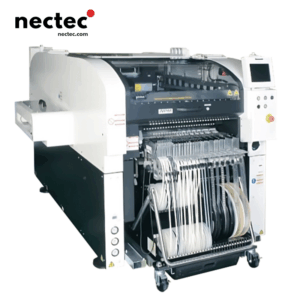In today’s fast-paced world, manufacturing processes continually evolve, incorporating innovative machines that streamline operations. One such groundbreaking machine is the simple pick and place machine. This technology not only enhances productivity but also contributes to remarkable quality control within the manufacturing sector. This article delves into the functionality, benefits, and applications of simple pick and place machines.
What is a Simple Pick and Place Machine?
A simple pick and place machine is an automated device used in manufacturing to transfer components from one location to another. These machines employ various mechanisms—like conveyor belts, robotic arms, and vacuum systems—to pick items from a source and place them onto a destination. The beauty of these machines lies in their simplicity and efficiency, drastically reducing human error and increasing the speed of production lines.
How Do Pick and Place Machines Work?
The basic operation of a pick and place machine involves three primary steps:
- Picking: The machine identifies and picks an item using simple algorithms guided by sensors. Depending on the application, the machine may use a gripper, suction cup, or other devices designed specifically for different components.
- Moving: After picking up the item, the machine navigates a predetermined path transporting the item to its designated location. This movement is often automated and can include conveyor systems or robotic arms.
- Placing: Once the machine reaches the destination, it carefully places the item down, ensuring accurate alignment and position to maintain quality control.
Benefits of Using Simple Pick and Place Machines
Incorporating simple pick and place machines into manufacturing processes offers numerous advantages:
1. Improved Efficiency
With the ability to operate continuously and rapidly without breaks, pick and place machines considerably boost production rates. Manufacturers can produce more products in less time, optimizing overall efficiency.
2. Cost-Effectiveness
While the initial investment may seem significant, the long-term savings are substantial. By reducing labor costs and minimizing human error, companies can save money on operations in the long run.
3. Enhanced Precision and Accuracy
Pick and place machines are designed for high precision. Their advanced sensors and algorithms result in consistent and error-free placements, significantly reducing waste and rework.
4. Reliability
These machines operate with a low risk of failure compared to human labor. They do not tire, which means they can work consistently throughout the shift, minimizing downtime and increasing reliability.
5. Versatility
Manufacturers can modify pick and place machines to suit various applications. From electronics assembly to packaging and quality assurance, these machines can adapt to diverse needs and handle different types of materials.
Applications of Pick and Place Machines
Pick and place machines find applications across multiple industries, showcasing their versatility and effectiveness:
1. Electronics Manufacturing
In electronics, precision is paramount. Pick and place machines are crucial for assembling circuit boards, where they place tiny components accurately and efficiently—often in a matter of seconds.
2. Food and Beverage
In the food industry, maintaining hygiene and speed is vital. Pick and place machines assist in packaging and sorting food items, ensuring optimal handling without compromising sanitary conditions.
3. Automotive Industry
They are instrumental in assembling automotive components, such as engines and interiors, where efficiency and precision enhance production quality.
4. Pharmaceuticals
In pharma, pick and place machines ensure accurate placement of vials and labels throughout the packaging process, minimizing errors that could lead to serious consequences.
5. Logistics and Warehousing
As e-commerce grows, pick and place machines are increasingly used in warehouses to sort, package, and manage inventory quickly and accurately.
Choosing the Right Pick and Place Machine for Your Business
Selecting the appropriate pick and place machine can be daunting. Here are some essential factors to consider:
- Application: Identify the specific process you need the machine for. Different applications may require varying tools and configurations.
- Payload Capacity: Assess the weight and size of components. Ensure the machine you choose can handle your operational needs.
- Speed Requirements: Depending on your production line’s speed, select a machine that aligns with your throughput demands.
- Adaptability: An adaptable machine will allow modifications as your manufacturing needs change, future-proofing your investment.
- Budget: Consider the total cost of ownership, including initial investment, training, maintenance, and operational costs.
The Future of Pick and Place Technology
As technology progresses, the future of pick and place machines looks bright. Innovations in artificial intelligence and machine learning will likely lead to more sophisticated pick and place systems capable of handling even more complex tasks with greater efficiency. Companies that adopt these advancements will stay competitive in an increasingly automated world.
Moreover, collaborative robotics, where machines work alongside human operators, are on the rise. This synergy can lead to enhanced flexibility and improved workflows in manufacturing environments as the automation of mundane tasks frees up human workers for more strategic roles.
In summary, simple pick and place machines are revolutionizing manufacturing operations by enhancing efficiency, precision, and reliability. They play a crucial role in various sectors, signifying their versatility and increasing importance in the modern manufacturing landscape. The continuous evolution of this technology promises an exciting future that will transform how manufacturers conduct business.






